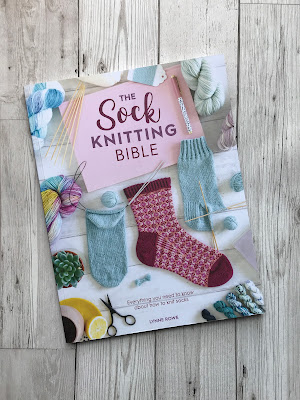When I was at university, I was the student who always took *all* my course books home during the holidays, planning on intensive revision sessions that never happened (hindsight is a wonderful thing: when you consider that I studied Chemistry and all the course texts where enormous books covering the whole of organic, inorganic or physical chemistry, I realise now that I could have carried a much smaller suitcase for all those holidays!).
Fast forward a few years to when I had finished studying: I became the optimistic knitter who thought that with all their ‘time off’ during the holidays they would catch up on all their planned knitting. I would pack all my active WIPs, then maybe another project just in case the mood took me. Bear in mind that I also had children by this point, and realistically was never going to get through 4 kg of yarn in a week or two!
It turns out that a holiday with kids is not any less work than being at home with them (especially with tired children having ‘danger naps’ in the car after a busy day out – they never go to bed at a sensible time on holiday, so evenings are short). The holidays where I do more knitting than I do at home are the ones where I have long train journeys on my own!
The two-project approach
At some point I changed my approach, finally realising it was futile to take all that yarn with me. Now I only take two projects with me on holiday.
The first project is a small easily portable project, almost always a sock. Something I can always have with me and add a row here and there.
The second project is a bit more complicated, maybe something with intarsia or cables, or a new project like a sweater cast on. I can work on this in the evenings when the kids are asleep.
This summer, I went away for two weeks and followed my two-project approach: one pair of socks for my husband, and one freshly cast-on project: a tee for me.
How much did I add to my projects while I was away?
The socks I packed this year were a repurposed WIP. I had
cast on a pair of socks for my husband, but made a poor choice for the yarn for
the leg – the colour had pooled in a very strange pattern, so I chose a
different yarn for the leg (a fabulous self-striping rainbow: Head
Over Heels by Stylecraft* - I’m using the Be You colourway and have the Be
Bold version ready for another cast on later in the year), pulled the sock back
to the bottom of the cuff and joined in the new yarn. By the end of two weeks
away, I had knitted… the leg of the first sock! It looks great, and will be my
out and about project for the next couple of months.
 |
| How my sock started the holiday... |
 |
| Late night sock knitting |
 |
| ...How my sock finished the holiday |
The tee is Colin, You Flutter Me by The Woolly Badger**, a summer tee that I am knitting in a great value cotton yarn: James C. Brett It’s Pure Cotton DK in Navy. I had barely started the tee when we set off for our holiday, and have now completed the yoke and started on the body. Definitely worth me taking it away with me, but I’m not convinced I’ll have finished it by the end of the summer. The project is going to be my TV watching knitting for the next few weeks – I’m determined to finish it rather than putting it away as a WIP, even if I don’t get to wear it this year.
 | |
| Yarn for my tee |
 |
| Swatch time! Cotton stretches - always block your cotton swatch |
 |
| Mid-holiday progress... |
 |
| Holiday end progress! |
What’s your approach to holiday knitting?
How much knitting do you pack for a holiday? Do you knit more when you’re at home, or when you’re away? Let me know in the comments.
*Affiliate link.
**Ravelry link. May affect people with photosensitivity, proceed with caution.





